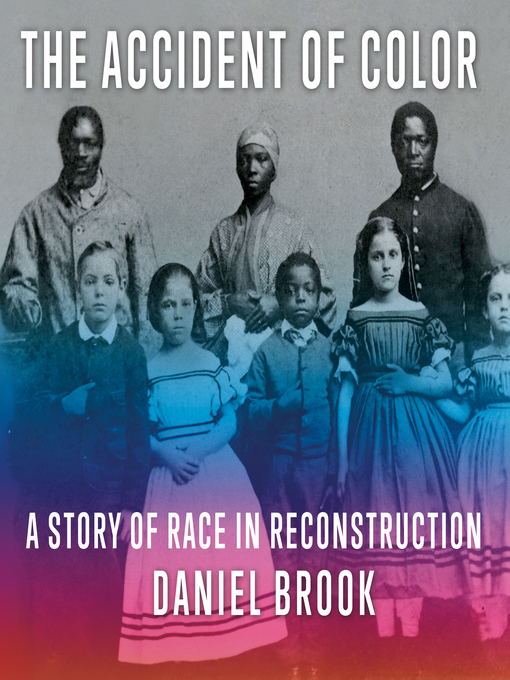-
Creators
-
Publisher
-
Release date
June 18, 2019 -
Formats
-
OverDrive Listen audiobook
- ISBN: 9781684419807
- File size: 294296 KB
- Duration: 10:13:06
-
-
Languages
- English
-
Reviews
-
Publisher's Weekly
May 20, 2019
The phrase “civil rights movement” is usually associated with the 1950s and 1960s, but, as journalist Brook’s insightful history shows, it is just as appropriately applied to the post–Civil War era. People of mixed racial heritage from Charleston and New Orleans, “misfit metropolises” that were home to sizable communities of free people of color, hoped to help the millions of ex-slaves, but were also concerned with protecting their own relatively privileged positions in the face of a new concept of race. That was the “one-drop rule,” according to which every American was either white or black, with no difference between “freemen and freedmen, wine merchants and cotton pickers.” Brook skillfully sketches the struggles of such men and women as Charles St. Albin Sauvinet, who battled educational inequalities in post–Civil War New Orleans, and Josephine DeCuir, who in 1873 successfully sued the steamboat company that would not honor her first-class ticket, an instance that showed how quickly post–Civil War racial advances were lost to Jim Crow segregation. Brook points out that later advances, such as the ruling in Brown v. Board of Education, were based on the idea that individuals could and should be assigned unitary racial identities. Brook reminds readers that binary conceptions of race are relatively recent historical artifacts, and that the first post–Civil War civil rights movement rejected not just racism but race itself. This thoughtful and vivid history makes a valuable contribution to the understanding of race in America.
-
Loading
Why is availability limited?
×Availability can change throughout the month based on the library's budget. You can still place a hold on the title, and your hold will be automatically filled as soon as the title is available again.
The Kindle Book format for this title is not supported on:
×Read-along ebook
×The OverDrive Read format of this ebook has professional narration that plays while you read in your browser. Learn more here.

